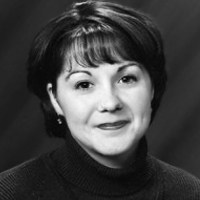Learning Objectives
Our learning objectives are to:
- Identify the scope of PICS (Post Intensive Care Syndrome) and its implications for OT practitioners in various settings from acute care, rehab, home health, outpatient, and long-term care.
- Understand the impact PICS may have on cognitive, psychosocial and physical functioning for individuals.
- Describe the current gaps and barriers to meeting the needs for this patient population.
- Identify occupational therapy interventions and application to clinical practice for this patient population.
Marla Robinson: I want to give a little background of my involvement with this topic. In 2010, the Society for Critical Care Medicine created a task force that looked at long-term issues for patients surviving an ICU stay. I was invited to be the AOTA representative on this task force. We first met in 2010 and then we met again in 2012. There are two publications that came out of these meetings, both of them are in Critical Care Medicine. One addresses the long-term outcomes and was published in 2012. The second one was published in December 2014 and looked at exploring the scope of Post Intensive Care Syndrome therapies.
Post Intensive Care Syndrome (PICS)
What came out of this task force was the term Post Intensive Care Syndrome. This is a constellation of disorders that affect ICU survivors, and these include such things as ICU-acquired weakness, mental health problems, as well as cognitive dysfunction or impairments. It is a relatively new, recognized diagnosis and has implications for patients going to rehab settings.
There is a limited amount of information available regarding the disorder. More and more is coming up in the evidence and in the literature on a monthly basis. It affects a person’s ADLs, IADLs, mobility, and limits their ability to participate in daily roles.
Post Intensive Care Syndrome Family (PICS-F)
Post Intensive Care Syndrome Family, or PICS-F, describes what happens to the caregivers. They experience a lot of anxiety, depression, impaired sleep, and a lot of these individuals, 30% of them, report these issues over an extended period of time.
Intensive Care Prevalence
Five million patients are admitted to the ICU each year. About half of those patients are over the age of 65. Four million patients survive the ICU each year and half of those are over 65. Up to 40% of these patients require mechanical ventilation. Cheryl will talk to us more about those implications and what that means for those patients. The mortality after discharge from ICU for patients over 65 is 14% at one year and 40% three years later. If they required mechanical ventilation, mortality is significantly increased with it being 30% at six months and 58% at three years.
